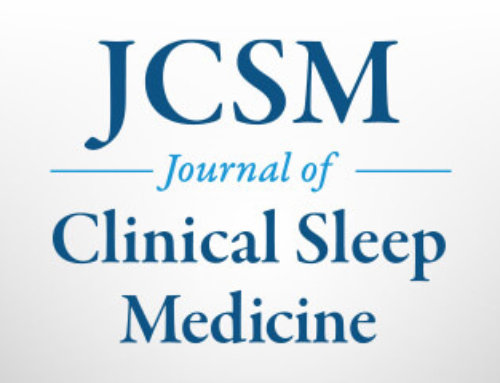WESTCHESTER, Ill. – In healthy people, both sleepiness and vigilance show a relationship with core body temperature and skin temperature. When core body temperature is high during the daytime, skin temperature is low, which translates into optimal vigilance. Conversely, when core body temperature is low at night time, skin temperature is high, which correlates to optimal sleep. Among those suffering from narcolepsy, however, direct manipulations of their skin and core body temperatures affect their vigilance and sleepiness, according to a study published in the February 1 issue of the journal SLEEP.
The study, authored by Rolf Fronczek, of the Netherlands Institute for Neuroscience in Amsterdam, and Leiden University Medical Center in The Netherlands, focused on eight patients who were diagnosed with narcolepsy with cataplexy and suffered from excessive daytime sleepiness. The subjects’ vigilance was measured using the Psychomotor Vigilance Task, and their sleepiness was assessed with the Maintenance of Wakefulness Test. Meanwhile, their skin temperature was mildly manipulated using a thermosuit, while their core body temperature was manipulated using hot or cnew food and drinks.
According to the results, patients were better able to maintain vigilance when core body temperature was increased than when it was lowered, indicating that vigilance in narcolepsy can be altered simply by altering the temperature of food and drinks. Also, the ability to maintain wakefulness was better when skin temperature was lowered than when it was increased. Therefore, the process of falling asleep in narcoleptic subjects was able to be influenced by gently cooling or warming their hands and feet.
“Patients with narcolepsy lack a specific neurotransmitter in their brains. This neurotransmitter is responsible for the regulation of the sleep/wake rhythm. That is why narcoleptic patients fall asleep during the day, but have problems sleeping during the night,” said Fronczek. “Sleep and skin temperature are tightly related, as everybody who ever tried to go to bed with cnew feet will know. Earlier researchers discovered that in healthy people, the temperature of the distal skin – hands and feet – not only increases just before falling asleep, but also influences sleep itself. Warm hands and feet thus promote sleep. Our research shows that, surprisingly, the temperature of the hands and feet of people with narcolepsy is on a high level throughout the day, a level that is normally only seen in healthy people just before falling asleep. We normalized this abnormal pattern of skin temperature using a specially designed thermosuit that can differentially manipulate the distal en proximal skin temperature with warm or cnew water. In this way, we were able to decrease daytime sleepiness and improve vigilance. This could lead to new therapeutical applications that can help to alleviate some of the symptoms of narcolepsy.”
Narcolepsy is a sleep disorder that causes people to fall asleep uncontrollably during the day. It also includes features of dreaming that occur while awake. Other common symptoms include sleep paralysis, hallucinations and cataplexy. About one out of every 2,000 people is known to have narcolepsy. There does seem to be a genetic link to it. It is very rare for more than two people in the same family to have this sleep disorder. It affects the same number of men and women.
It is recommended that adults get between seven and eight hours of nightly sleep.
The American Academy of Sleep Medicine (AASM) offers the following tips on how to get a good night’s sleep:
- Follow a consistent bedtime routine.
- Establish a relaxing setting at bedtime.
- Get a full night’s sleep every night.
- Avoid foods or drinks that contain caffeine, as well as any medicine that has a stimulant, prior to bedtime.
- Do not bring your worries to bed with you.
- Do not go to bed hungry, but don’t eat a big meal before bedtime either.
- Avoid any rigorous exercise within six hours of your bedtime.
- Make your bedroom quiet, dark and a little bit cool.
- Get up at the same time every morning.
Those who suspect that they might be suffering from narcolepsy, or another sleep disorder are encouraged to consult with their primary care physician or a sleep specialist.
SLEEP is the official journal of the Associated Professional Sleep Societies, LLC, a joint venture of the AASM and the Sleep Research Society.
More information on narcolepsy is available from the AASM at https://www.SleepEducation.com/Disorder.aspx?id=5.
SleepEducation.com, a patient education Web site created by the AASM, provides information about various sleep disorders, the forms of treatment available, recent news on the topic of sleep, sleep studies that have been conducted and a listing of sleep facilities.
For a copy of this article, entitled, “Manipulation of Core Body and Skin Temperature Improves Vigilance and Maintenance of Wakefulness in Narcolepsy,” or to arrange an interview with an AASM spokesperson regarding this study, please contact Jim Arcuri, public relations coordinator, at (708) 492-0930, ext. 9317, or jarcuri@aasm.org.
# # #




